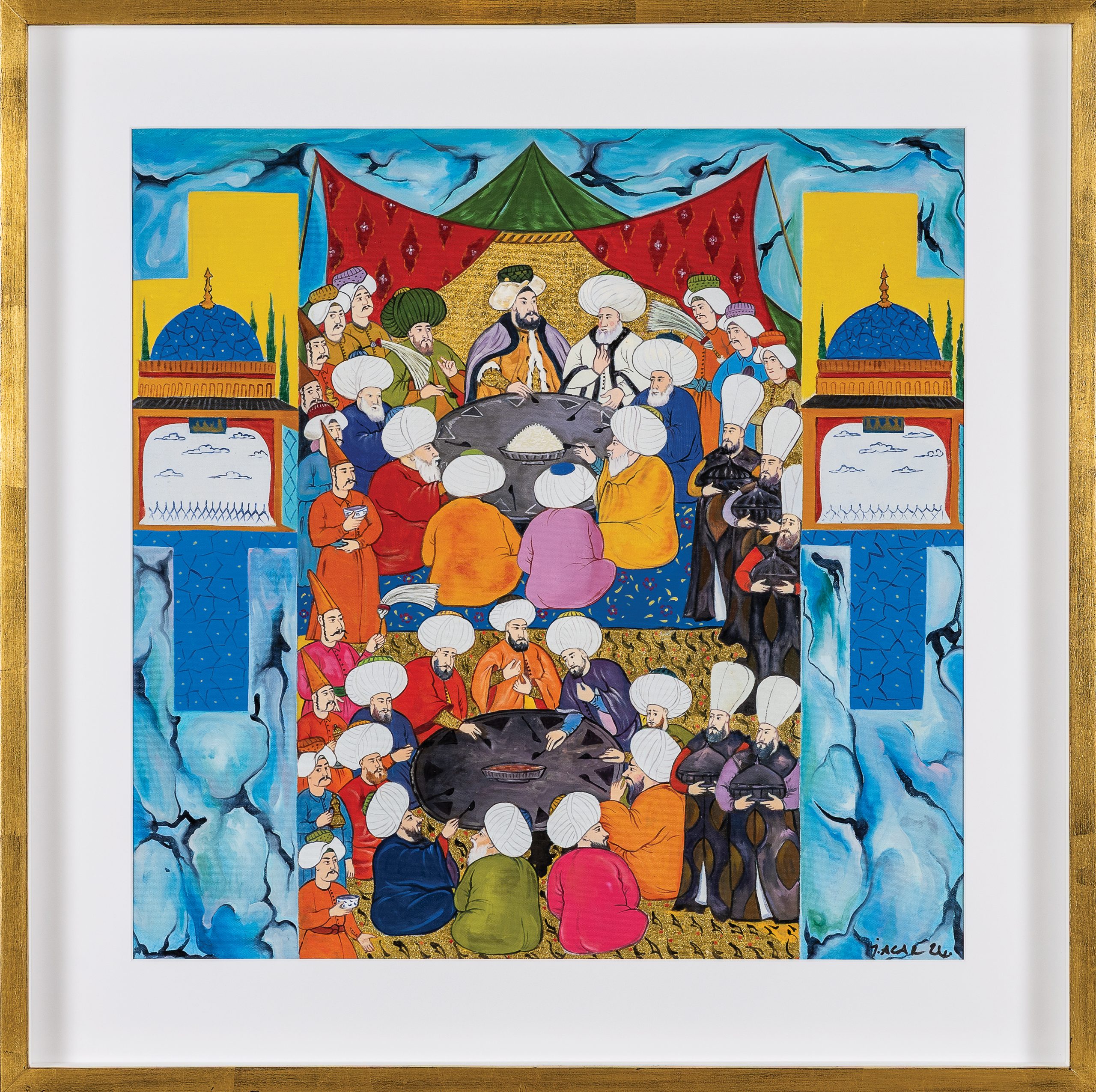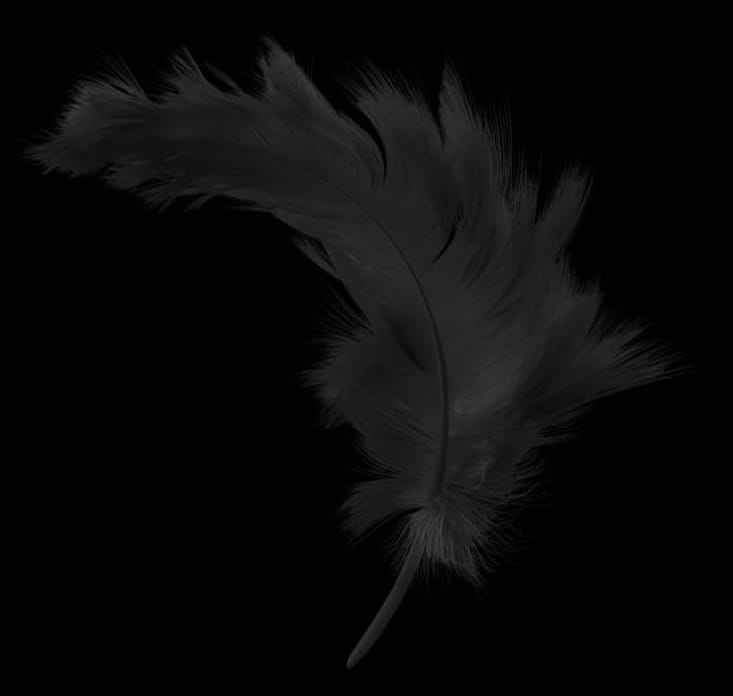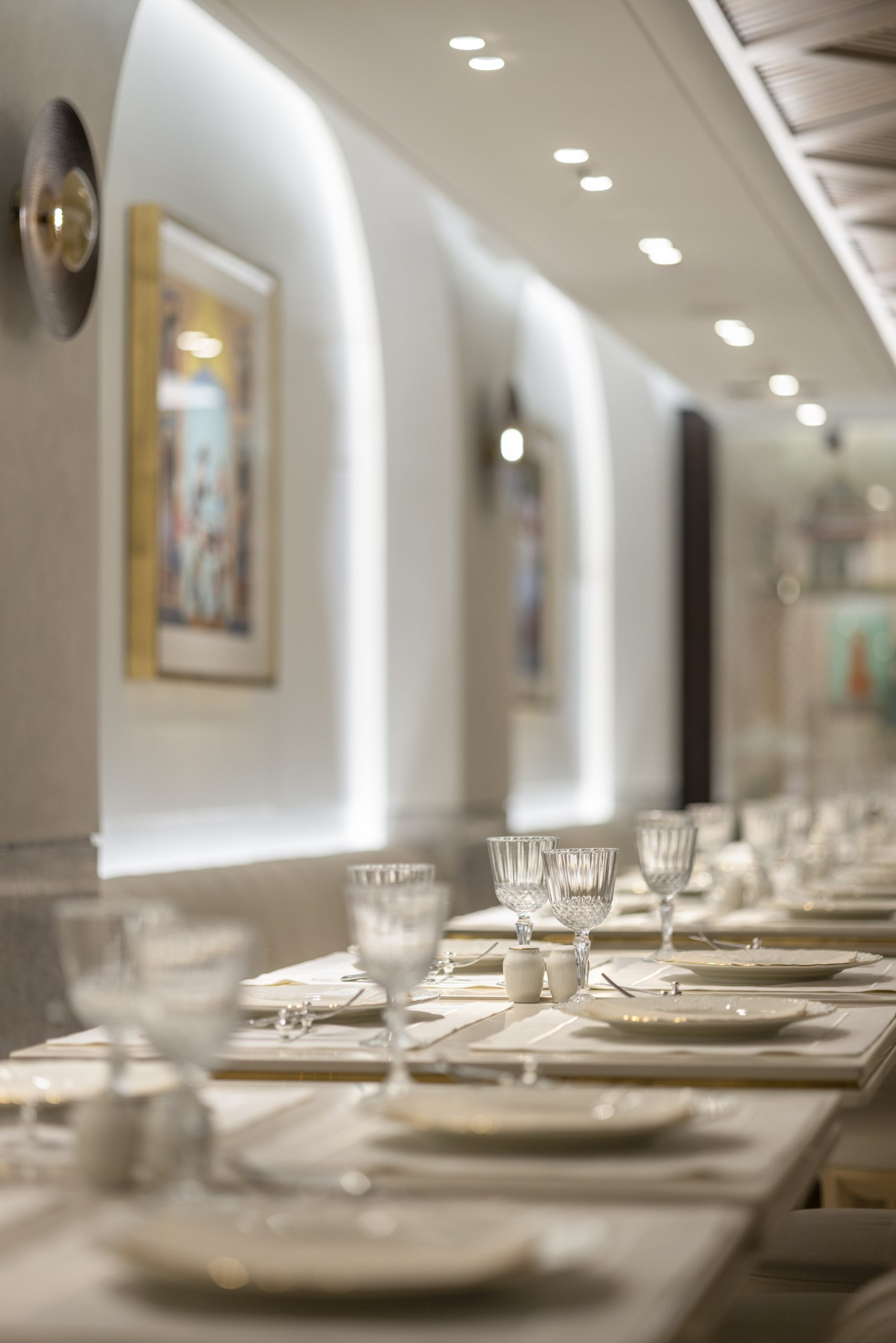

Amid the infinite tones of turquoise sky, a sacred silence resonates as angels form a celestial circle, bearing witness to the moment of creation through the power of light and breath. Each one touches the essence of humanity with a distinct prayer: the heart softens with mercy, the conscience is weighed with justice, the soul takes root in memory, and the spirit reaches forward with hope.
Listen to the artwork in English.
Eseri Türkçe dinleyin.
The three domes rising from the lower part of the composition symbolize time, space, and soul. This architecture is not merely built of stone, but woven with meaning. Here, creation transforms into a sacred ritual—an aesthetic reflection of divine order, a poetic harmony of celestial balance and spiritual mathematics.
Produced specifically for this space by artist İsmail Acar, the work blends tradition with intuition, form with meaning, through the stylized language of the East. It echoes the birth narratives of Turkish-Islamic art, transcending the boundaries of time.
Yet this piece speaks not only of the past, but also of the future. As a symbol of a newly born space, it offers a metaphor for a renewed existence. It gently whispers: This structure is no longer just stone, but memory; not merely a dome, but a heart; not only an echo of the past, but the breath of the present. And that breath comes to life in a work of art.
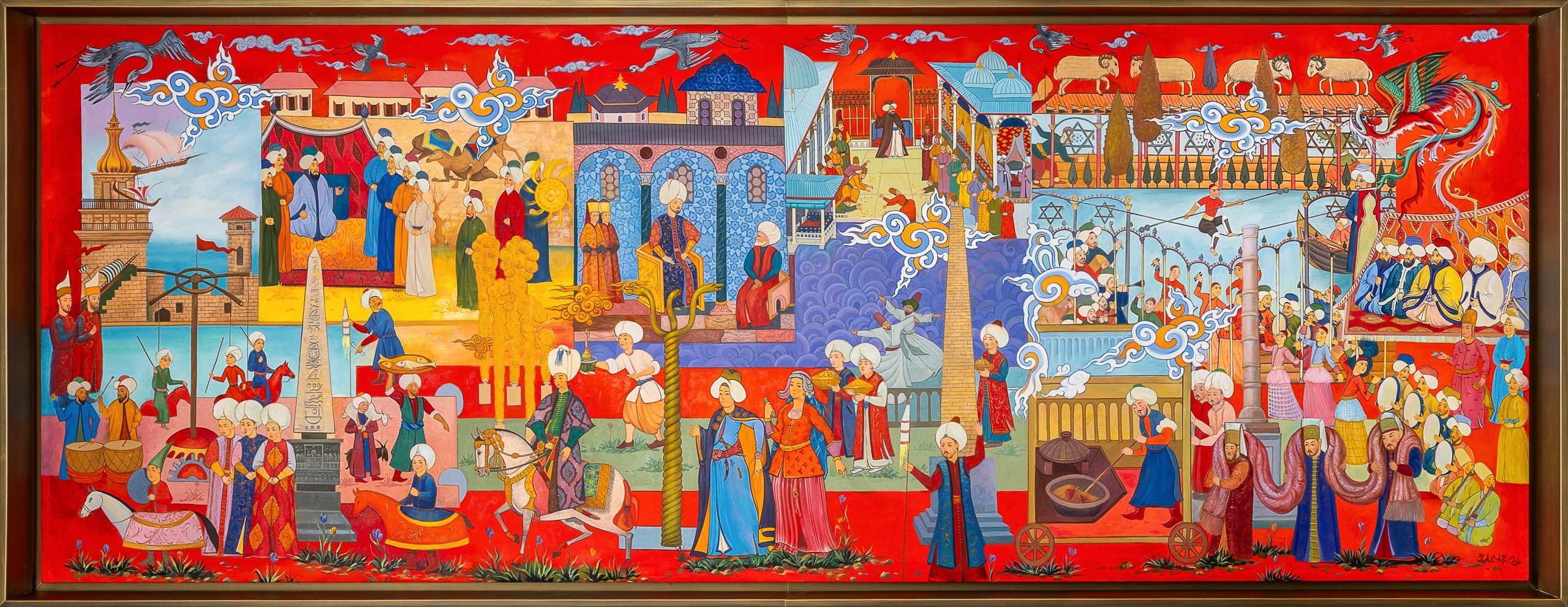
In Ottoman society, rituals evolved into a way of life, infused with multilayered meanings that permeated every aspect of daily existence. From guild ceremonies to marriage proposals, from Mevlevi whirling rites to camel wrestling, from Friday salutes to the Sultan distributing coins to the public—each ritual served as a cultural cornerstone, reinforcing an individual’s place in society and sense of belonging.
Listen to the artwork in English.
Eseri Türkçe dinleyin.
In this site-specific work by artist İsmail Acar, Ottoman ritual culture is reinterpreted through symbolic forms and colors. The prominent use of red in the composition represents life, vitality, and memory in Turkish culture. The artwork builds a symbolic bridge between past and present, inviting viewers into the magnificent ritual world of the Ottoman Empire.
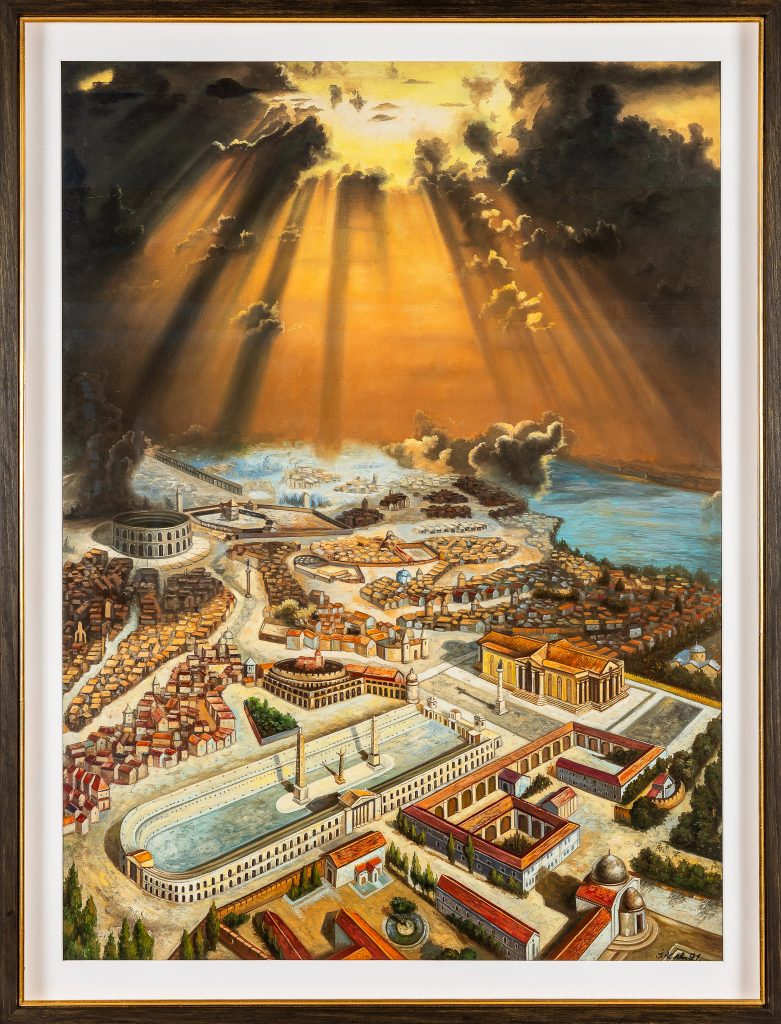
Listen to the artwork in English.
Eseri Türkçe dinleyin.
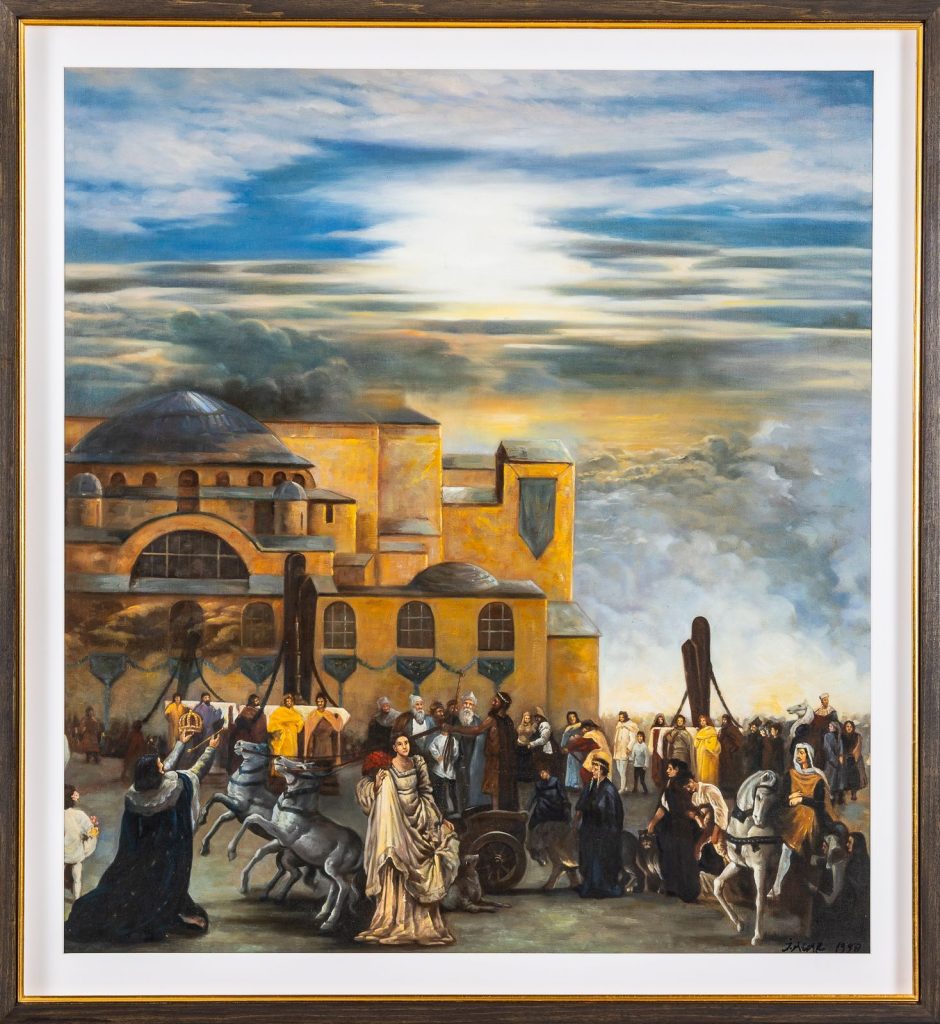
Listen to the artwork in English.
Eseri Türkçe dinleyin.
According to tradition, the splendor of the opening ceremony carried a political message. Empress Theodora arrived at Hagia Sophia in a chariot drawn by two lions, symbolizing both her influence within the court and her authority as queen. Emperor Justinian, elevated on his ceremonial chariot, appeared before the people as the very representative of God on earth.
The crowd, advancing toward Hagia Sophia with icons in hand, became part of this sacred inauguration. The icons were not only religious images but also symbols that revealed the bond between faith and imperial power in Byzantine society. In this way, the people joined the emperor and empress in sanctifying the temple that embodied God’s glory on earth.
At the climax of the ceremony, Justinian is said to have declared: “Solomon, I have surpassed you!” comparing the splendor of Hagia Sophia with that of the Temple of Solomon in Jerusalem.
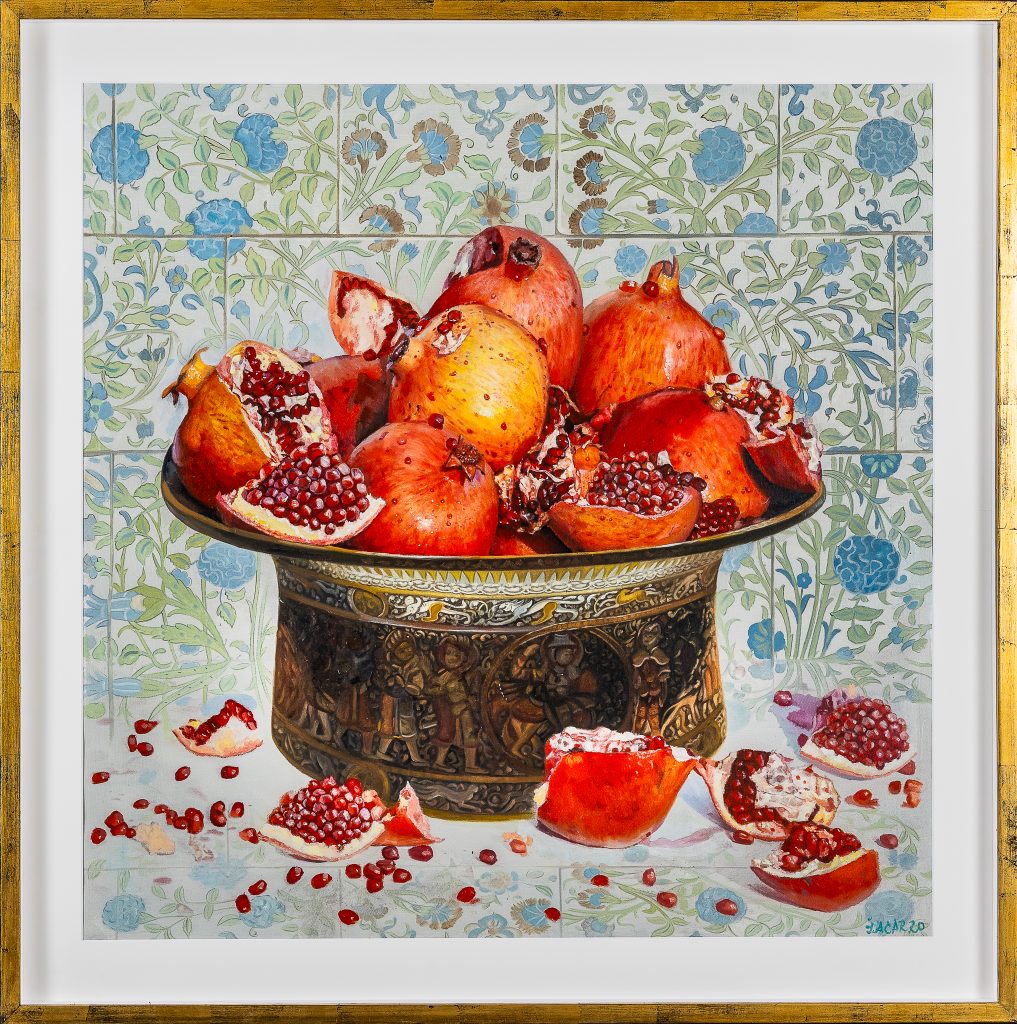
Tile symbolizes eternity, divine peace, and permanence.
The pomegranate represents abundance, family, fertility, and the fruit of paradise.
Together, the tiled pomegranate composition embodies multiplicity within unity, divine abundance, and eternal beauty.
Listen to the artwork in English.
Eseri Türkçe dinleyin.
with İsmaİl Acar
